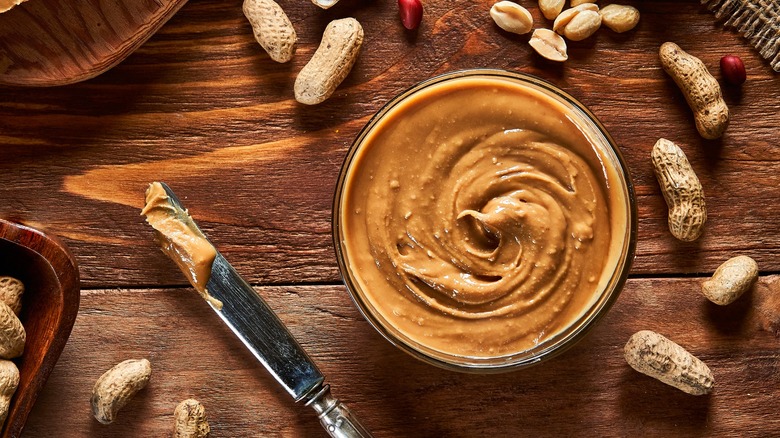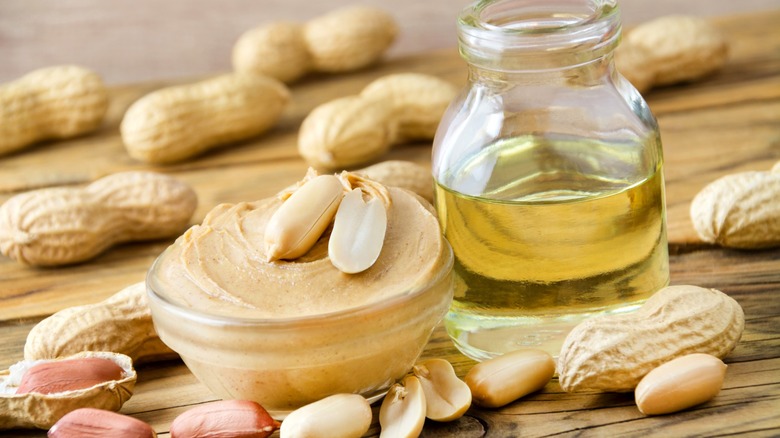How Sanitariums Played A Role In The Invention Of Peanut Butter
We may receive a commission on purchases made from links.
As pantry staples go, few products are as popular as peanut butter. Nearly 300 million people per year in America attested to consuming it recently, which is over 90% of the population. However, many of those peanut butter lovers aren't familiar with the fact that the spread was initially created as a dietary supplement for patients in a sanitarium.
Long before folks were coming up with inventive ways to upgrade peanut butter and jelly sandwiches, John Harvey Kellogg was working as a physician and the director of the Battle Creek Sanitarium in Michigan. Originally a health reform institute, the sanitarium evolved into a kind of medical spa where people were treated for various ailments. Kellogg would have been the first in line to advocate for plant-based burgers these days as he was leery about foods he thought caused digestive problems — like meat. Nuts provided his patients with an excellent source of protein, but not everyone could chew enough nuts to get all that nutrition, especially if those patients had poor dental health. Kellogg began boiling peanuts and grinding them into a rudimentary paste that was easier to eat, and peanut butter was born.
In 1895, Kellogg patented his invention and began marketing it to his patients. These included celebrities including multiple U.S. presidents, famous actors, Thomas Edison, Mary Todd Lincoln, and Amelia Earhart. However, the spread they were consuming wasn't quite the same as the Skippy we know and love today.
Peanut butter had one big problem
Peanut butter initially had one complication that made storage challenging — the peanut oil would separate from the nutty mass and required regular stirring to keep the product whole. Once separated, the oil would become rancid. Today, there is a clever way to store all-natural peanut butter so this doesn't occur, but back when the product was new, shipping and storing peanut butter was difficult. In 1921, Joseph Rosefield solved this issue by conjuring up a method of making it with partially hydrogenated oil to solidify the spread and keep it from separating in its container.
Rosefield founded the Skippy brand soon after his breakthrough. During World War II, Skippy was sent overseas as a method of providing much-needed protein to soldiers. Folks who stayed behind were also coming around to the concoction because meat was being rationed at home, and it wasn't long after that the food became a household staple. While Kellogg is credited with first creating peanut butter in the Battle Creek Sanitarium, it was Rosefield who made the spread approachable enough that the masses began to consume it regularly.

